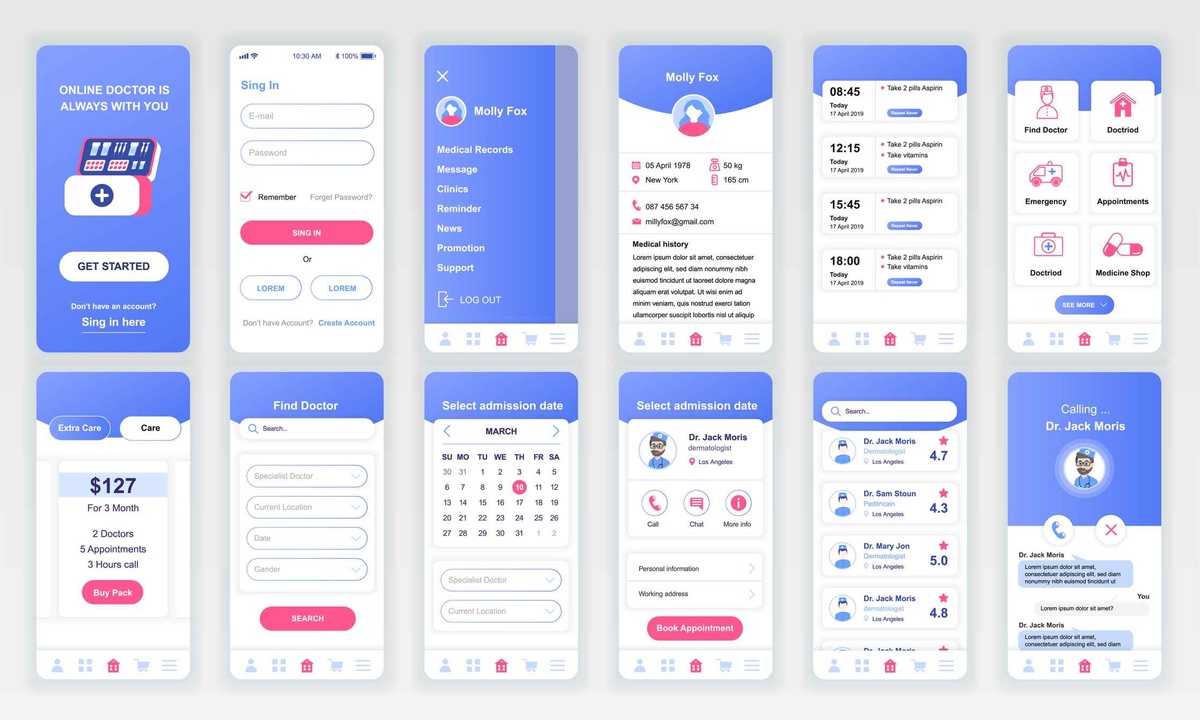In today's digital age, telemedicine has emerged as a convenient and effective way to provide medical care remotely. With the increasing demand for virtual healthcare services, Telemedicine Application Development can be a rewarding venture. Whether you're a healthcare professional looking to expand your practice or a tech entrepreneur interested in entering the healthcare industry, developing a telemedicine app requires careful planning and execution. In this step-by-step guide, we'll walk you through the process of building your own telemedicine application.
Step 1: Define Your Objectives
Before diving into development, it's crucial to clearly define the objectives of your telemedicine app. Consider what specific features you want to include, who your target audience is, and what problems your app aims to solve. Take time to research existing telemedicine apps to identify gaps in the market and opportunities for differentiation.
Step 2: Understand Legal and Regulatory Requirements
Telemedicine is subject to various legal and regulatory requirements, depending on your location. Ensure compliance with healthcare regulations, patient privacy laws such as HIPAA (Health Insurance Portability and Accountability Act), and data protection standards. Consulting legal experts specializing in healthcare law can help you navigate these complexities.
Step 3: Choose the Right Technology Stack
Selecting the appropriate technology stack is essential for the development of a robust telemedicine application. Consider factors such as scalability, security, and interoperability with existing healthcare systems. Popular technology stacks for telemedicine apps include using programming languages like JavaScript (for web apps) or Swift (for iOS apps), along with frameworks like React Native or Flutter for cross-platform development.
Step 4: Design User-Friendly Interfaces
User experience is paramount in telemedicine applications, as they often involve sensitive interactions between patients and healthcare providers. Design intuitive interfaces that are easy to navigate, with clear instructions and minimal friction. Consider incorporating features such as appointment scheduling, secure messaging, and video conferencing into your app's design.
Step 5: Develop Core Features
Focus on developing the core features of your telemedicine app, such as patient registration, appointment booking, video consultations, electronic prescriptions, and secure messaging. Prioritize functionality that ensures seamless communication and collaboration between patients and healthcare professionals. Test each feature thoroughly to identify and address any bugs or usability issues.
Step 6: Implement Security Measures
Security is paramount in telemedicine applications to protect patient data and comply with regulatory requirements. Incorporate encryption protocols, secure authentication mechanisms, and access controls to safeguard sensitive information. Regular security audits and updates are essential to mitigate potential vulnerabilities.
Step 7: Conduct Extensive Testing
Thorough testing is essential to ensure the reliability, performance, and usability of your telemedicine application. Conduct unit testing, integration testing, and user acceptance testing to identify and rectify any defects. Solicit feedback from beta testers and iterate on your app's design and functionality based on their input.
Step 8: Obtain Necessary Certifications
Depending on your target market and the nature of your telemedicine app, you may need to obtain certifications or accreditations to demonstrate compliance with industry standards. Research certification requirements relevant to your jurisdiction and industry sector, and ensure that your app meets all necessary criteria.
Step 9: Launch and Promote Your App
Once your telemedicine application is ready, it's time to launch it into the market. Develop a comprehensive marketing strategy to promote your app and attract users. Leverage digital channels such as social media, search engine optimization (SEO), and targeted advertising to reach your target audience effectively.
Step 10: Provide Ongoing Support and Updates
The launch of your telemedicine app is just the beginning. Provide ongoing technical support to address user queries and resolve any issues that may arise. Continuously monitor app performance and user feedback, and release regular updates to enhance functionality, security, and usability.
By following these steps, you can build a successful telemedicine application that meets the needs of patients and healthcare providers alike. With the growing demand for remote healthcare services, investing in telemedicine technology offers immense potential for improving access to medical care and enhancing patient outcomes.


No comments yet